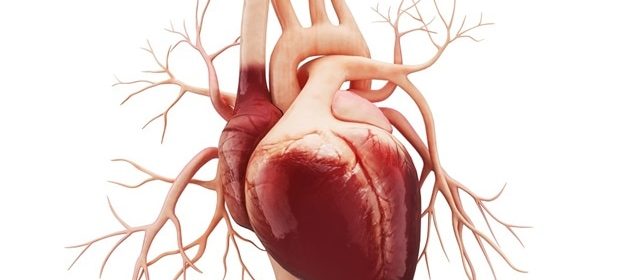depakote hair loss selenium

Hearts are kept strong with regular physical activity, and daily activity such as a daily, 20-minute, brisk walk is key; however, some groups may have additional barriers that affect whether or not a daily walk is feasible. Increasing physical activity levels, particularly among people at higher risk for cardiovascular disease, has known heart health benefits and may help reduce cardiovascular health disparities, ismo nikkola zeeland according to a new American Heart Association scientific statement published today in the Association's flagship, peer-reviewed journal Circulation. An American Heart Association scientific statement is an expert analysis of current research and may inform future guidelines.
The new statement, "Increasing Equity of Physical Activity Promotion for Optimal Cardiovascular Health in Adults," examines physical activity levels among different groups of adults, reviews strategies for increasing physical activity in groups that are under-resourced or at-risk for poor cardiovascular health, and offers suggestions for how to promote physical activity to reduce cardiovascular risk equitably through physical activity.
Helping everybody improve their heart health is important. We found that many groups who had poor heart health also had low levels of physical activity. We know regular physical activity is a key component of optimal heart health. These findings provide an opportunity to focus our efforts on physical activity programs in places where people need them the most."
Gerald J. Jerome, Ph.D., FAHA, volunteer chair of the writing committee for the scientific statement and professor in the department of kinesiology at Towson University in Towson, Maryland
Regular physical activity is one healthy lifestyle metric of Life's Essential 8, the American Heart Association's checklist to measure cardiovascular health. Life's Essential 8 details four health factors (blood pressure, cholesterol, blood sugar and body mass index); and four behavioral/lifestyle factors (smoking status, physical activity, sleep and diet) proven to prevent and reduce cardiovascular risk.
Despite this, less than one in four American adults achieve the physical activity levels recommended by guidelines from the U.S. Department of Health and Human Services. The federal guidelines, which the American Heart Association supports, recommend adults should have at least 150 minutes of moderate physical activity each week. Getting close to the recommended levels may be as simple as a daily, 20-minute walk.
Jerome and members of the writing committee reviewed the latest scientific evidence on physical activity programs developed to improve physical activity levels within specific populations. Physical activity levels were lower among certain groups of people with existing elevated cardiovascular disease risk factors. For example, lower physical activity was observed in adults who are older, female, Black, people with disabilities, people with depression, those who have lower socioeconomic status or live in rural areas or neighborhoods that are less walkable.
"Unfortunately, many groups that have a higher risk of developing heart disease also on average, report lower amounts of physical activity," Jerome said. "There is good news since some programs are focused on collaborating with communities to increase physical activity levels among high-risk groups."
Attributes of successful physical activity programs:
- Strategies to increase physical activity should seek community input, engagement and leadership, which may help ensure that barriers are addressed and community needs are met.
- Engaging communities in the design, implementation and evaluation of physical activity programs is an important step towards empowering its residents to improve their heart health through increased physical activity. It also helps to ensure the programs are culturally appropriate.
- Approaches to increasing physical activity should address common barriers, such as cost, lack of access, lack of time, lack of knowledge, as well as barriers specific to the needs of a specific community.
- Increasing physical activity levels to increase health equity requires a team approach, including health care professionals who regularly assess and promote physical activity to all patients.
Once community supports are in place to reduce barriers, the hope is that more people will become physically active and improve their heart health. There is still much to do in the long term, according to Jerome. "More research funding is needed to support communities and researchers working together to develop engaging and sustainable ways that help residents increase their physical activity levels. Lawmakers should expand coverage for preventive care and support, such as assessment and programs that promote physical activity in the clinical setting."
The American Heart Association advocates for a wide range of policies to improve access to opportunities for physical activity, such as physical education in schools and funding for improving community walkability.
This scientific statement was prepared by the volunteer writing group on behalf of the American Heart Association's Council on Lifestyle and Cardiometabolic Health Committee on Physical Activity, the Council on Cardiovascular Nursing, the Council on Clinical Cardiology and the Council on Peripheral Vascular Disease. American Heart Association scientific statements promote greater awareness about cardiovascular diseases and stroke issues and help facilitate informed health care decisions. Scientific statements outline what is currently known about a topic and what areas need additional research. While scientific statements inform the development of guidelines, they do not make treatment recommendations. American Heart Association guidelines provide the Association's official clinical practice recommendations.
Co-authors are Vice Chair Bethany Barone Gibbs, Ph.D., FAHA; William R. Boyer, Ph.D.; Eduardo E. Bustamante, Ph.D.; Jacob Kariuki, Ph.D., A.N.P.; Francisco Lopez-Jimenez, M.D., M.B.A., FAHA; Amanda E. Paluch, Ph.D.; Damon Swift, Ph.D., FAHA; and Kashica J. Webber-Ritchey, Ph.D., M.H.A., R.N.
American Heart Association
Jerome, G. J., et al. (2023) Increasing Equity of Physical Activity Promotion for Optimal Cardiovascular Health in Adults: A Scientific Statement From the American Heart Association. Circulation. doi.org/10.1161/CIR.0000000000001148.
Posted in: Medical Research News | Medical Condition News | Healthcare News
Tags: Blood, Blood Pressure, Blood Sugar, Body Mass Index, Cardiology, Cardiometabolic, Cardiovascular Disease, Cholesterol, CT, Depression, Diet, Education, Health and Human Services, Health Care, Health Disparities, Health Insurance, Healthy Lifestyle, Heart, Heart Disease, High Blood Pressure, Kinesiology, Nursing, pH, Physical Activity, Research, Sleep, Smoking, Stroke, Vascular
Source: Read Full Article